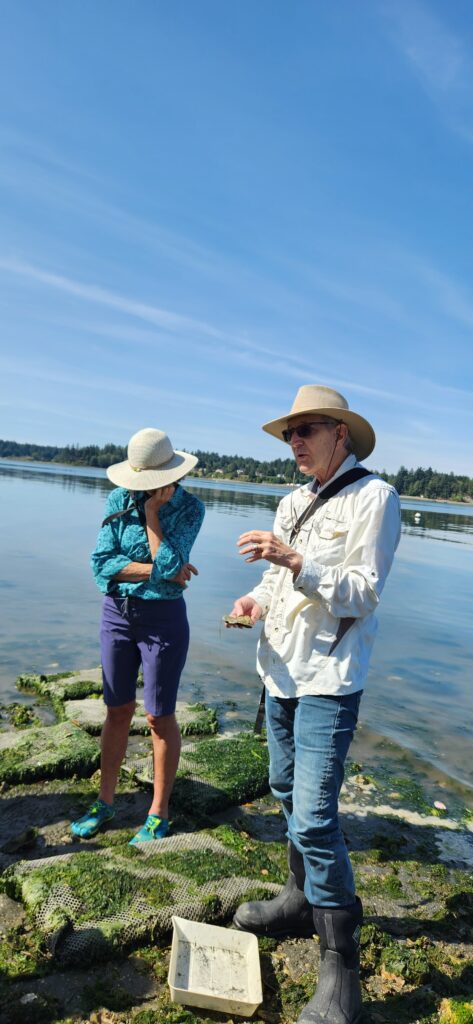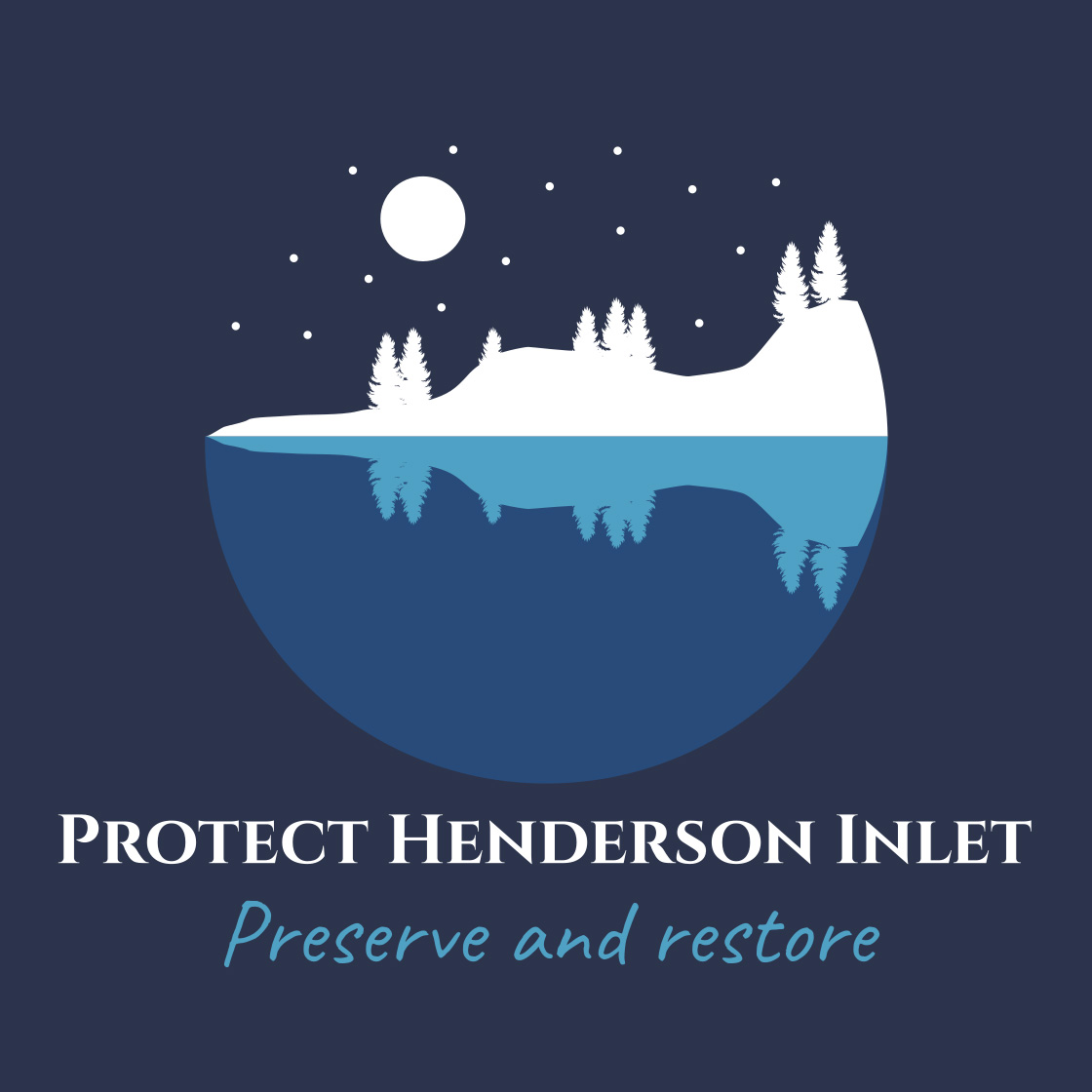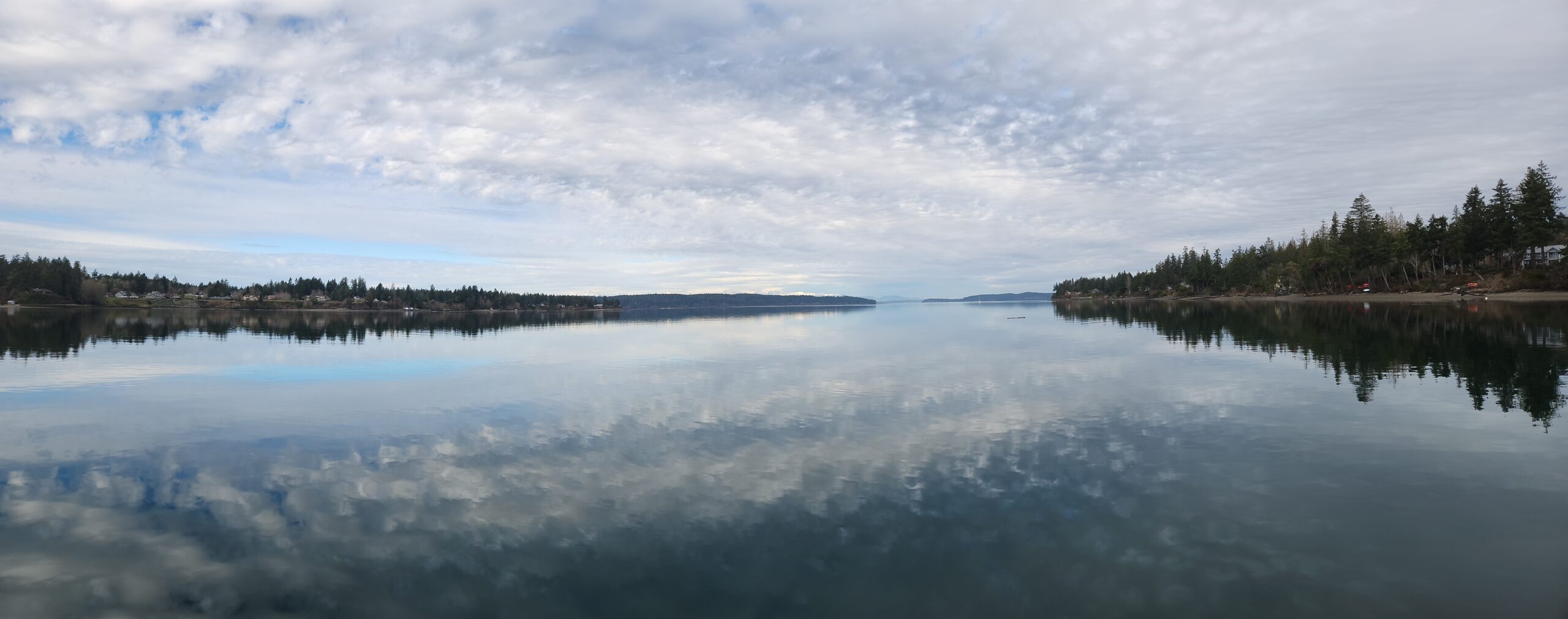Our Living Shore
We had our first educational beach walk with Dr. Bob Wharton on a sunny August morning. From the banks of Henderson Inlet, we made our way down the slope to a calm, low tide of -0.6 ft. Over the next 1 ½ hours, we covered only a short distance because there were so many fascinating life forms to learn and talk about right at our feet, which kept us engaged throughout the walk.
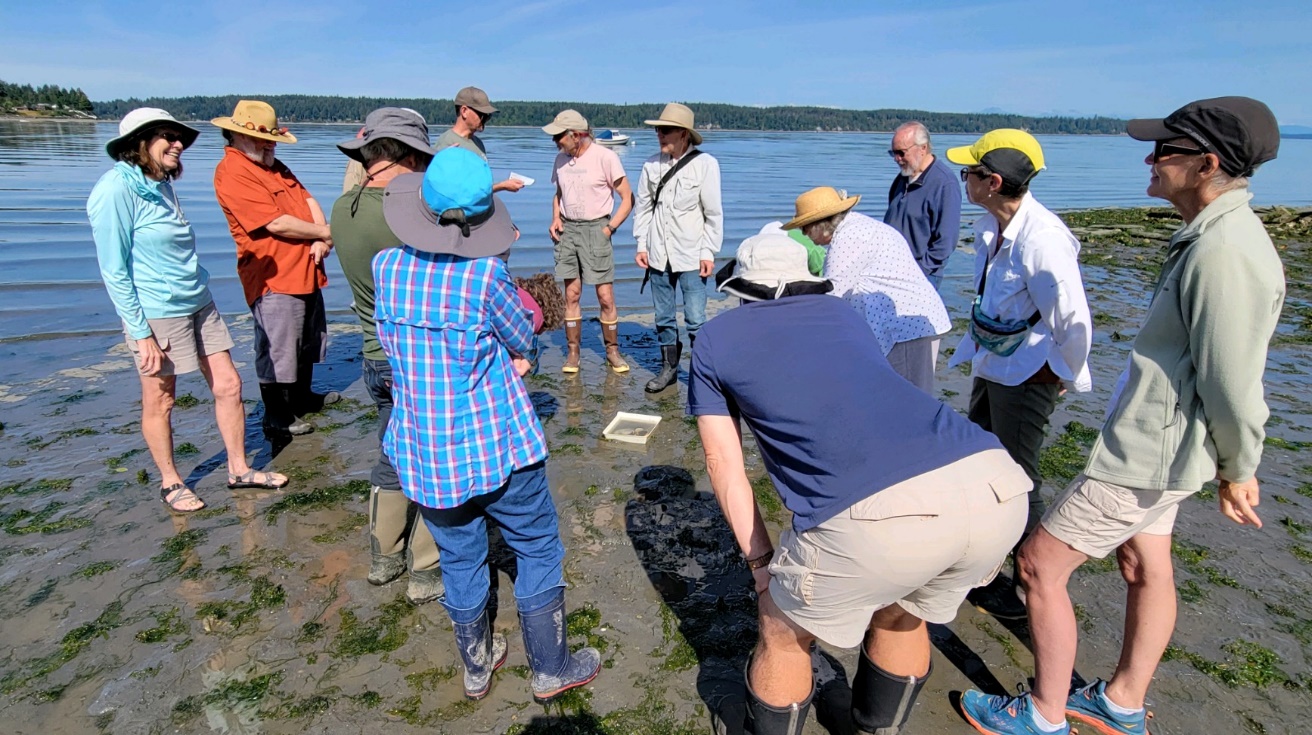
We came across a large group of live gray sand dollars during our exploration. Bob, our guide, informed us that sand dollars are a type of echinoderm, as are urchins. They are sometimes referred to as flat urchins. These creatures feed on phytoplankton, detritus, and algae fragments. Sand dollar larvae swim freely and undergo several stages of development before their exoskeleton forms. They typically live for around ten years. All urchins have internal shells and a thin layer of skin. Aquaculture farmers remove sand dollars because they can be an obstacle.
Looking further out, we saw tall sprays of water. Most big siphons seen at the low tide are from horse clams.
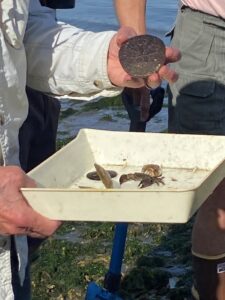
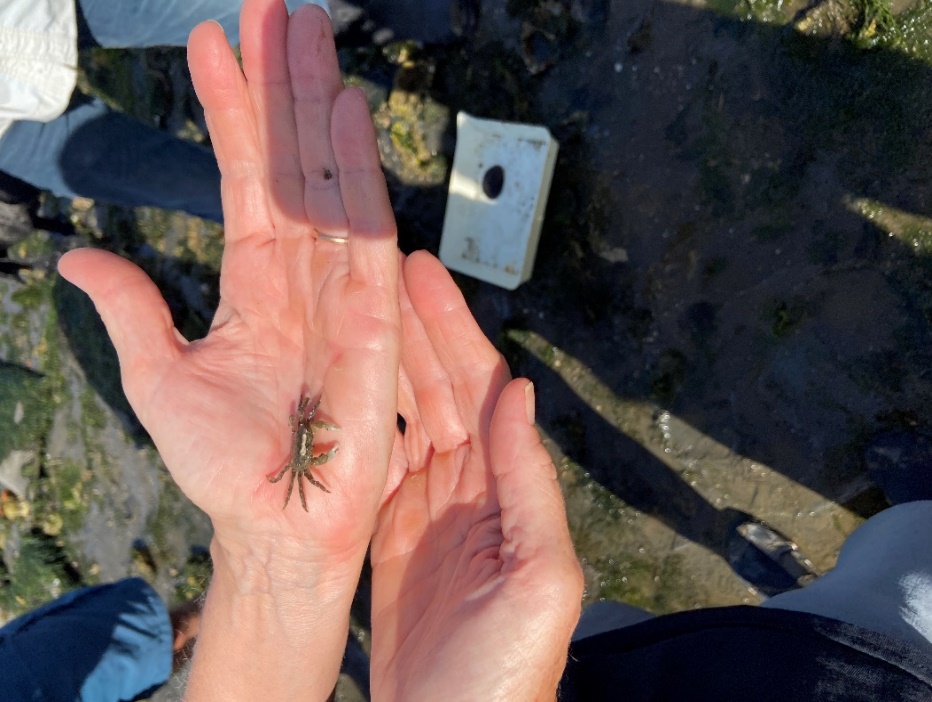
Next to grab our curiosity were the crabs. Bob helped us to distinguish red rock crabs by describing their black-tipped claws. We discovered that black-clawed shore crabs have the thickest claws and reside in the intertidal zone. More common are the hairy crab and the graceful crab. Graceful crabs have white tips on their claws and purple on their legs and live in intertidal and subtidal areas. The majority of crabs on this beach were hairy crabs. We also spotted some hermit crabs. We learned that when crabs molt, they shed their skin, and the brown fluff near the base of their claws is their gills.
Then, we spent a lot of time observing worms. Using a shovel, we dug up two different worms and placed them in Bob’s tray. To our surprise, the worm we thought was not a predator attacked the other. Marine worms are related to earthworms. Marine worms feed on other worms. They grab their prey through their tubes, which protrude a few inches out of the sand. The largest worms are sea lettuce eaters. Worms have paddles on their bodies. Bamboo worm is the name of one kind. Worms secrete a mucus that bacteria feed on. There’s a three-part worm living at minus tide with different flaps on each section for eating and other functions.
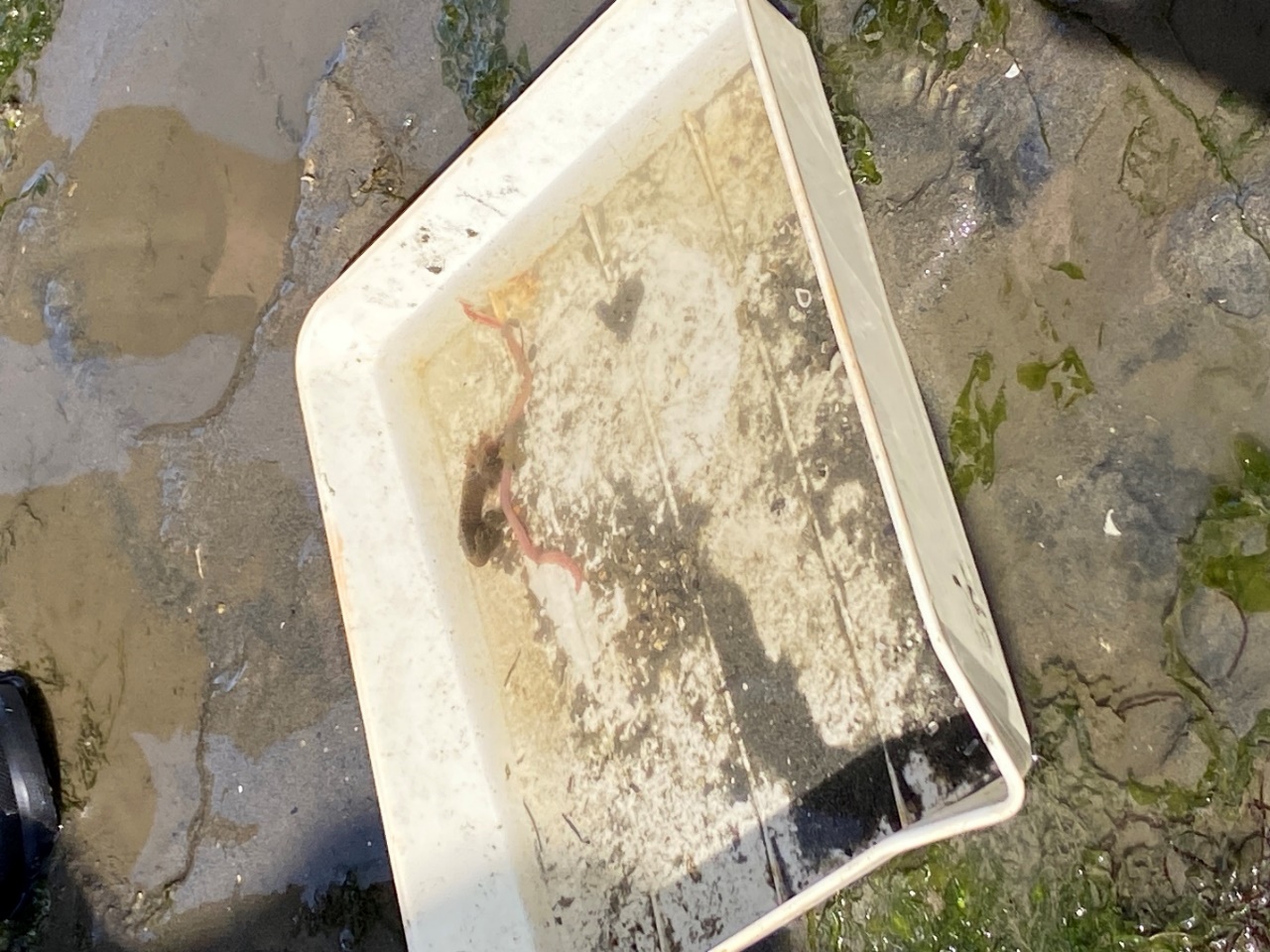
We noticed several small round mounds scattered across the sand. They are moon snails, he told us as he gently wiped the sand away with his fingers to lift one from just below the surface. This one was about the size of a softball. He placed it into his white tray while telling us about its unique characteristics. Moon snails are native here. They are a delicacy in some cultures. People often mistake the egg cases left behind by moon snails for litter. These cases are made of sand and resemble the rubber part of a gray toilet plunger. The mother moon snail turns upside down to lay her egg mass, and as it emerges, the mother’s mucous adheres sand to the outside of the egg mass, and the collar shape forms as she twirls her shell on her foot. In this way, a moon snail lays about 500,000 eggs between the layers over the course of one to eight hours. Moon snails have teeth on their snout, which they use to bore into clams, creating a small hole. They can either eat through the hole or open the clam and devour it. They also bore into oysters, but not often. Japanese drills and dogwinkles or whelks are the primary predators of oysters.
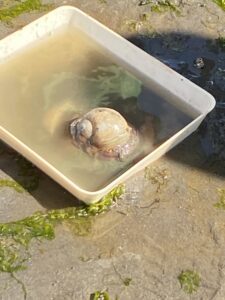
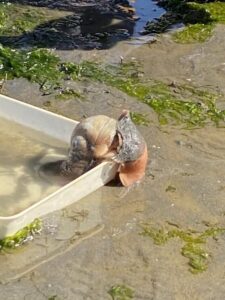
We stopped at some oyster bags and found a large plainfin midshipman fish under one of them.
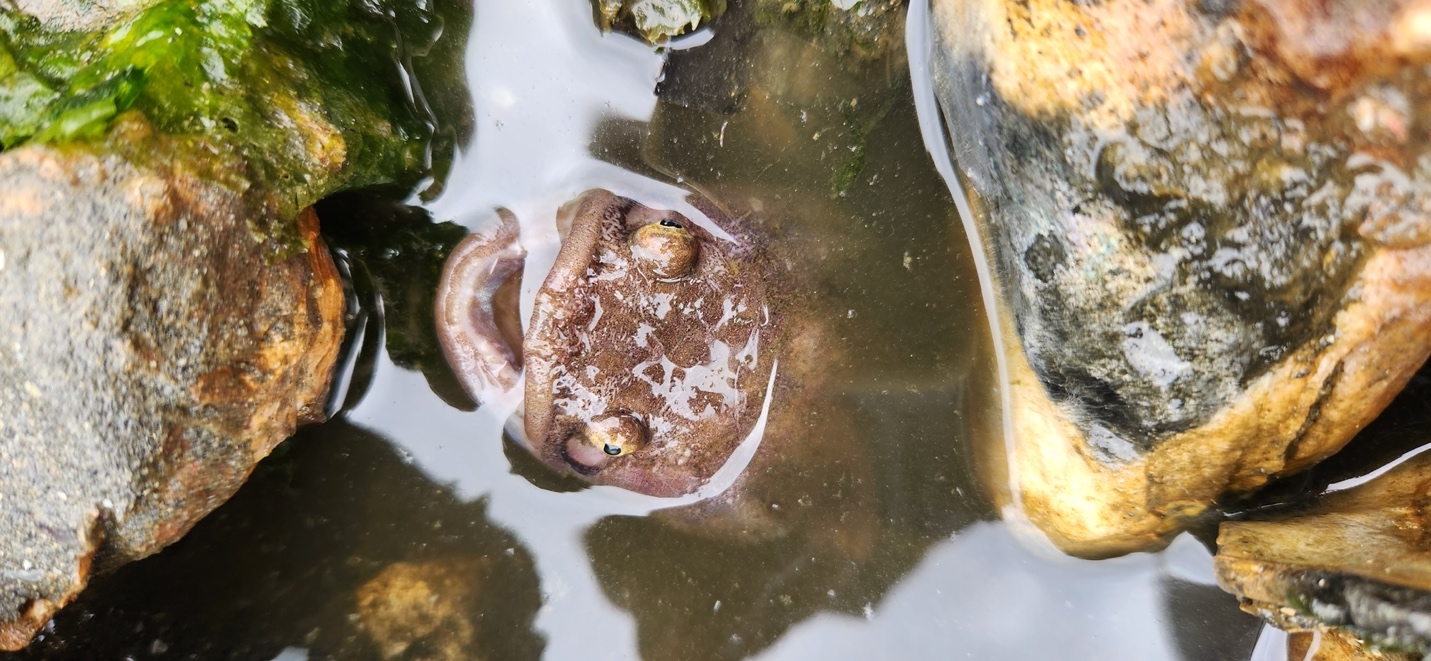
Oysters grow on each other. Unlike a muscle that attaches to surfaces by gluelike threads made with its foot, oysters don’t have feet because they live on the surface and open their shells to allow water to go over their gills. Oysters filter water of things like phytoplankton. They also poop, of course. Barnacles have a symbiotic relationship with oysters. Barnacles have iron-impregnated teeth that they use to clean algae off the shells of oysters. Bob taught us that barnacles land on their heads and use their antennae to stick themselves to things. Their tiny feet point upwards, creating a castle-like structure. Some barnacles are capable of closing up tightly enough to survive out of water for one or two months, waiting for the next king tide.
As we walked back towards the bank, we scanned across acres of algae. Too much algae can be a sign of excessive nutrients, often caused partly by runoff from land in urban areas. Amidst the algae, we also saw some kelp. Sugar kelp is the most common. Bob also pointed out some nori seaweed, which is typically used in making sushi. It is one cell thick and reddish brown. We also saw and felt scouring kelp (Turkish washcloth).
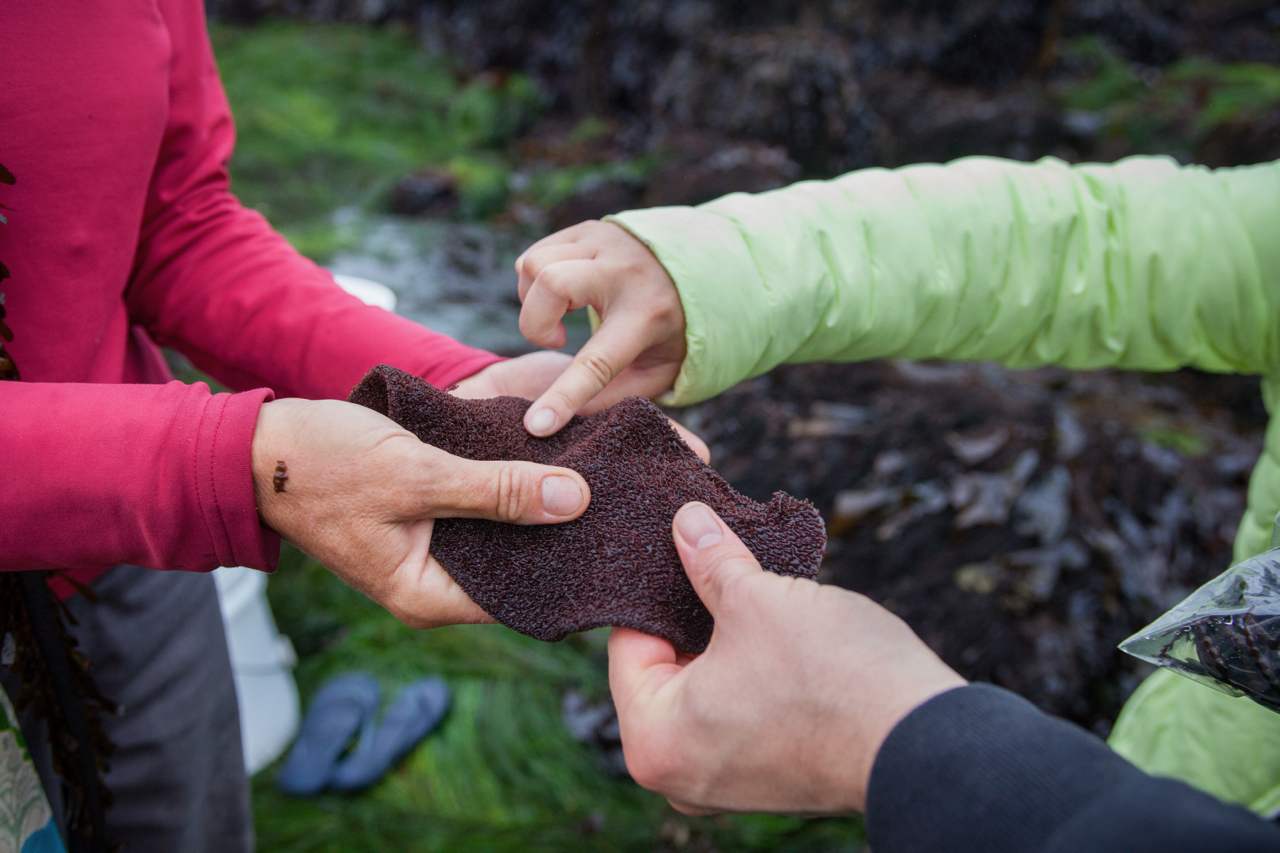
Learning together was a fun and informative adventure! We appreciate Dr. Wharton’s generosity and expertise! We look forward to many more future opportunities!
Thanks, Bob!
